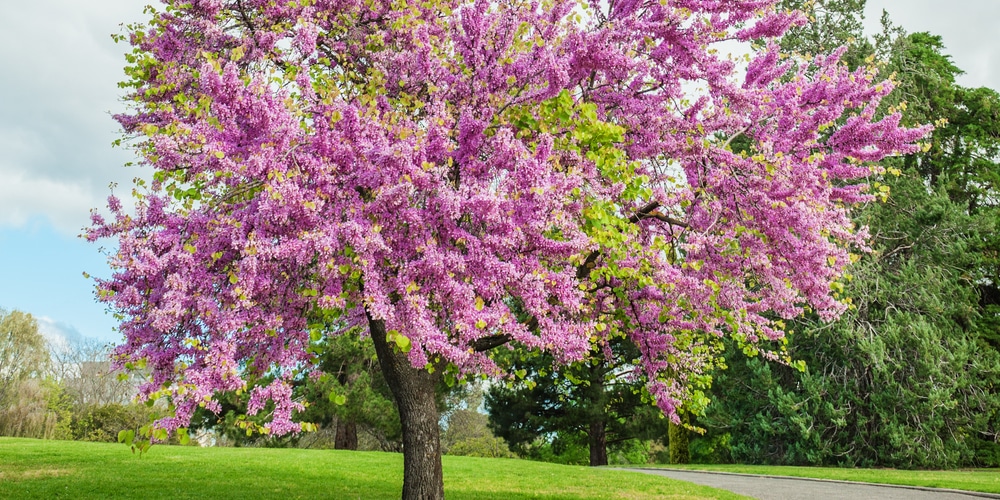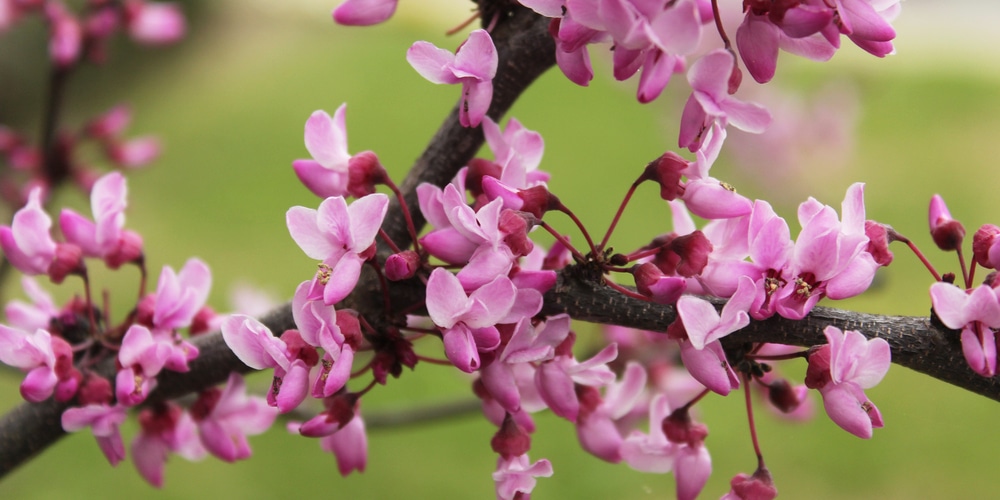The eastern redbud (Cercis canadensis) is one of the most beautiful, cold-hardy ornamental trees. Most notably, its lovely pink flowers bloom along the trunk and branches— it displays cauliflory, not just ramiflory. And you can find several cultivars that make them perfect for a variety of public environments and private spaces.
What is the difference between Forest Pansy and Eastern Redbud? The Forest Pansy is a specific cultivar of Cercis canadensis. So, the Forest Pansy belongs to the same species.
But it also displays quirky traits, usually associated with another plant named “Ruby Falls” (U.S. Plant Patent #2556). For example, unlike other cultivars, Forest Pansy has purplish blooms and foliage.
Enthusiasts compare Forest Pansy VS Eastern Redbud varieties that have other peculiar characteristics. Let’s see how this cultivar fares against the others!
What Is the Prettiest Redbud Tree?
Forest Pansy VS Eastern Redbud “Appalachian Red“
Appalachian Red is a cultivar that comes from Maryland. To be precise, Dr. Max Byrkit, a physician with a passion for rhododendrons and daylilies, bred it in 2016. One day, he noticed a dark Redbud while driving. So, he took some cuttings from it. Since then, this cold-hardy variety has spread everywhere in North America.
Unlike the Forest Pansy, Appalachian Red produces eye-catching glowing pink or fuchsia pink blooms. During the summertime, it develops attractive Chartreuse-colored foliage. But it still shares the need for well-drained soil and a potential height of 20-25 feet.
While the two cultivars can stand in the same garden, the contrast would be too noticeable.
You can think of them as two extremes. On one end, you find a more serious Forest Pansy inviting you to chill and ponder about how everything around you is deeply connected. And on the other side, the more vibrant and cheerful Appalachian Red is hollering something about getting wasted and inviting random people over.
Forest Pansy VS Eastern Redbud “Pauline Lily”
Pauline Lily is a variety that makes muddy white or pale pink blooms. On top of that, it is not a widespread cultivar Alba, which also makes white flowers, and remains slightly smaller in size.
Unlike Forest Pansy, Pauline Lily has smaller green leaves. Because of its height and width, it is more suitable for smaller gardens and yards. Forest Pansy can instead have a width issue because this plant can go past 30 feet in width over time.
Harald Neubauer gave Pauline Lily its name in 2016. But it was Colin Lilly who discovered it in West Virginia. Neubauer named this cultivar after the Colin ‘s wife.
Forest Pansy VS Eastern Redbud “Tennessee Pink”
Tennessee Pink looks like Appalachian Red on steroids! For clarity, Tennessee Pink has pink-flamingo, neon pink flowers you can spot from a mile away.
In contrast with the Forest Pansy, Tennessee Pink has a rounder and more airy appearance. The tree canopy tends to form a round shape and looks like a pink balloon. Instead, Forest Pansy grows as wide as it can, and its crown flattens at the sides.
You had better prune the Forest Pansy to create additional branching early on. Above all, tip pruning will keep a nice full canopy, which looks better on this cultivar. Instead, if you let the Tennessee Pink grow wild, it will create picturesque shapes, providing an evocative glimpse of a detailed landscaped garden.
Forest Pansy VS Eastern Redbud “The Rising Sun”
The Rising Sun offers lime green foliage. On top of that, the heart-shaped leaves turn banana yellow in summer and can get golden-orange in the fall. So, the unusual contrast with the pink flowers adds a splash of color no matter where you place it.
Forest Pansy makes large, purplish leaves only that darken over time. But both varieties enjoy the midday sun. Perhaps, Forest Pansy’s canopy is a better shade tree. In contrast, The Rising Sun creates a more friendly environment that offers serenity and boosts curb appeal.
In spring, The Rising Sun displays tri-color leaves. The bright yellow gives a nice contrast to the green foliage of the other trees. Or when placed next to a red leaf tree like the Japanese maple. Then, the young leaves at the top emerge with an apricot hue and fade into yellow and lime green colors.
Related Article: Redbud Tree Florida: Growth and Care Guide

